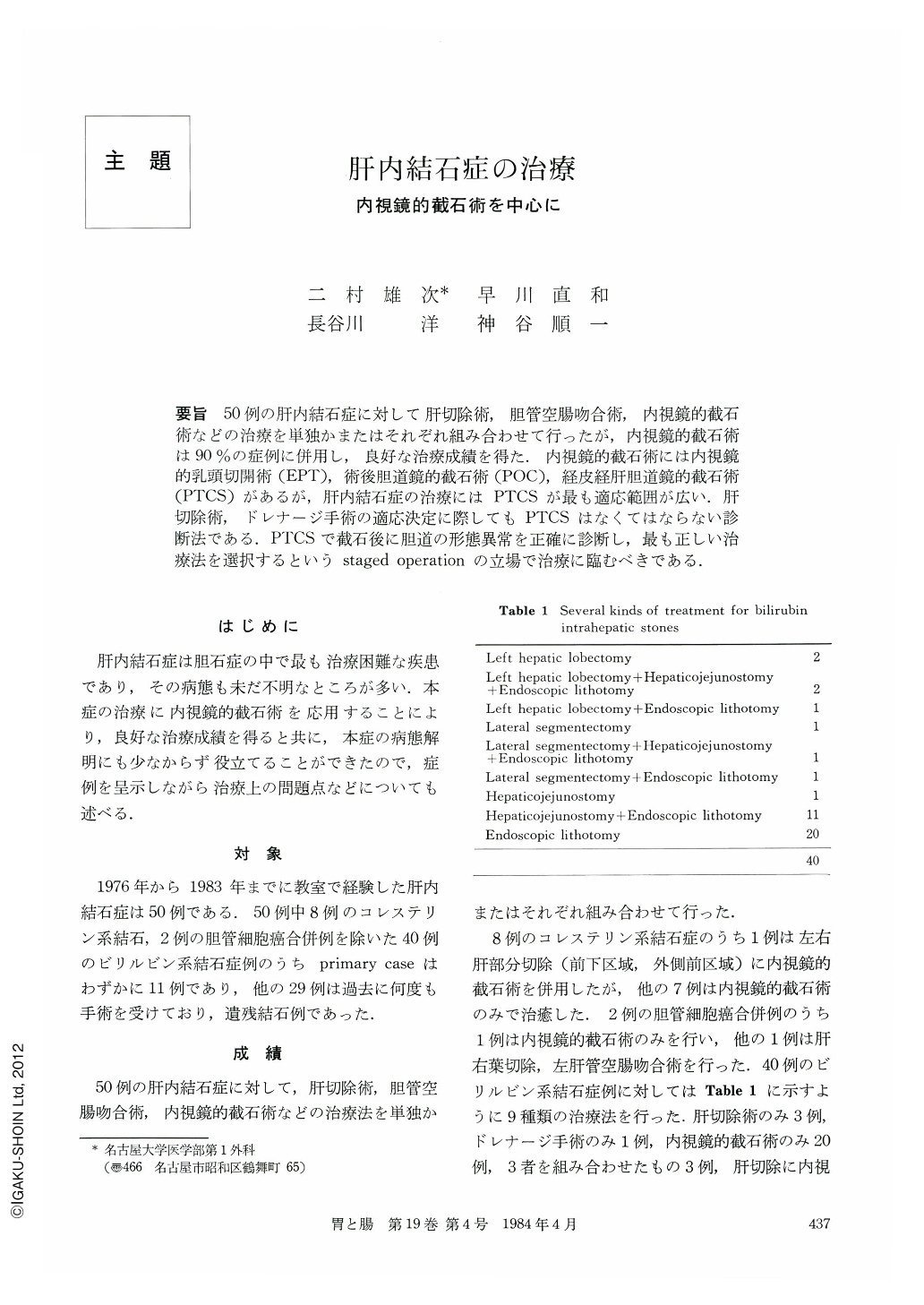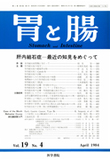Japanese
English
- 有料閲覧
- Abstract 文献概要
- 1ページ目 Look Inside
要旨 50例の肝内結石症に対して肝切除術,胆管空腸吻合術,内視鏡的截石術などの治療を単独かまたはそれぞれ組み合わせて行ったが,内視鏡的截石術は90%の症例に併用し,良好な治療成績を得た.内視鏡的截石術には内視鏡的乳頭切開術(EPT),術後胆道鏡的截石術(POC),経皮経肝胆道鏡的截石術(PTCS)があるが,肝内結石症の治療にはPTCSが最も適応範囲が広い.肝切除術,ドレナージ手術の適応決定に際してもPTCSはなくてはならない診断法である.PTCSで截石後に胆道の形態異常を正確に診断し,最も正しい治療法を選択するというstaged operationの立場で治療に臨むべきである.
Fifty cases of intrahepatic stones have been treated in our department by means of hepatectomy and/or hepaticojejunostomy and/or endoscopic lithotomy. Good results were obtained using endoscopic treatment in 45 cases (90%). Endoscopic papillotomy (EPT), postoperative choledochoscopy (POC) and percutaneous transhepatic cholangioscopy (PTCS) have been applied for the endoscopic lithotomy. Primary cases are 11 and 29 cases are residual stones and several kinds of surgical treatment had been performed, which means inadequate operations had been applied after making an inaccurate diagnosis of intrahepatic stone. Hepatectomy and/or hepaticojejunostomy should be applied after making an accurate diagnosis of abnormal and/or pathological biliary tracts (biliary stenosis or dilatation) by means of PTCS. PTCS is the most advantageous for the endoscopic treatment of intrahepatic stone.

Copyright © 1984, Igaku-Shoin Ltd. All rights reserved.


